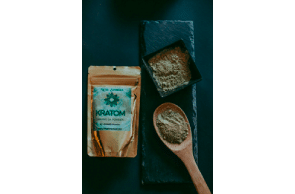Kratom is the extract from the Mitragyna speciosa tree native to Southeast Asia and is popular in the region for its therapeutic effects. The botanical herb gained entry into the USA about a decade ago and gradually gained popularity. Statistics show that there are 5 million avid kratom consumers in the USA by 2019.
Consequently, budding entrepreneurs jumped at the opportunity to cash in on the herb’s sales. Although the kratom business is a rocky road, given its uncertain legality, you can still make a kill out of your business using these tips:
Top 3 Strategies to Market Your Kratom Brand in 2021
1. Source The Best Quality Products
Kratom falls under the herbal supplement category under federal law, so the Food and Drug Authority (FDA) does not regulate its production. While the loophole may seem advantageous to unscrupulous vendors’, it’s not good for the kratom industry. The lack of standardized product quality allows crooked business people to introduce defective products into the kratom market.
However, as an above-board kratom business, you can leverage the situation by positioning your brand as the go-to place for safe, high-quality thai kratom products. Be upfront about where you source your kratom products to earn consumer trust. Offer third-party lab tests to consumers to verify the integrity of your raw material and manufacturing processes.
Refrain from stocking kratom supplements containing proprietary blends due to dosage issues and only sell products with straightforward ingredients and dosage labels. Stick to popular kratom brands that share your interest in selling high-quality products and are forthcoming with their production processes. By establishing consumer trust, you can leverage word-of-mouth advertising and even get potential consumers curious about kratom to buy your products.
2. Prioritize Consumer Education
Kratom only appealed to American consumers’ interest roughly a decade ago. Since the herb is not native to America, research on its potential benefits remains limited. Misinformation and possible plans to classify kratom as a schedule 1 controlled substance only make matters worse. Six American states have gone ahead to ban kratom use within their states, although the herb is federally legal.
Consequently, most American consumers have a biased view of kratom and kratom products. Despite pharmaceutical opioids’ potentially adverse effects, potential kratom consumers who may benefit from kratom opt for pharmaceutical medication. However, by prioritizing consumer education, you can leverage the millions of Americans turning to natural remedies to improve their overall wellbeing.
Focusing on consumer education allows you to position your kratom business as an authoritative brand within the industry. Focus on creating informative blog articles about kratom’s potential benefits. Educate the masses about factors like kratom strains and their various therapeutic effects. You can also join online kratom community forums, establish kratom-related misinformation and write informative pieces to clarify issues. Besides blog articles, you can also use other channels like your brand’s social media platforms and video streaming services to reach a larger audience.
Offering consumer education shows potential customers that you are more passionate about the product than just making money. As a result, they will reward your integrity by turning you into loyal customers. Besides, consumer education also helps optimize your brand’s online platform for better search engine ranking.
3. Have A Robust Online Marketing Strategy
The best place to sell kratom is online because of the potential to reach a larger market. So if you do not have an e-commerce platform, invest in one. However, note that selling kratom online isn’t just about posting products; you need an online marketing strategy.
Kratom marketing is quite dicey since the herb is illegal in some states. Second, most prominent social media platforms limit or ban paid social ads for kratom due to the herb’s bad press. Regardless, you can employ a few online marketing tips to boost your brand’s prominence and kratom sales. For starters, use social listening tools to establish conversations about kratom making rounds on various social media platforms and forums. Jump into the discussion at the opportune moment to answer pertinent questions and sell your brand and products.
You can also use email marketing as a customer acquisition and customer retention strategy. Email marketing tools allow you to segment your customers into distinct categories and channel appropriate tools and products towards a specific customer segment. Additionally, you can also utilize consumer cohorts; or group consumers according to their purchasing behaviors and create unique content for each cohort.
Finally, you can also employ influencer marketing whereby an individual with a substantial online following promotes your brand and products on their social platforms. However, ensure you select an influencer whose followers and lifestyle can identify with your brand.
Also, ensure you have preset KPIs and metrics to measure the performance of any online marketing effort. Finally, refrain from making any kratom health claims to avoid your social media account suspension.
Conclusion
The kratom business landscape is not the easiest to navigate, given the poor public view of the herb. However, you can set your kratom business for long-term success by following these simple tips.





















